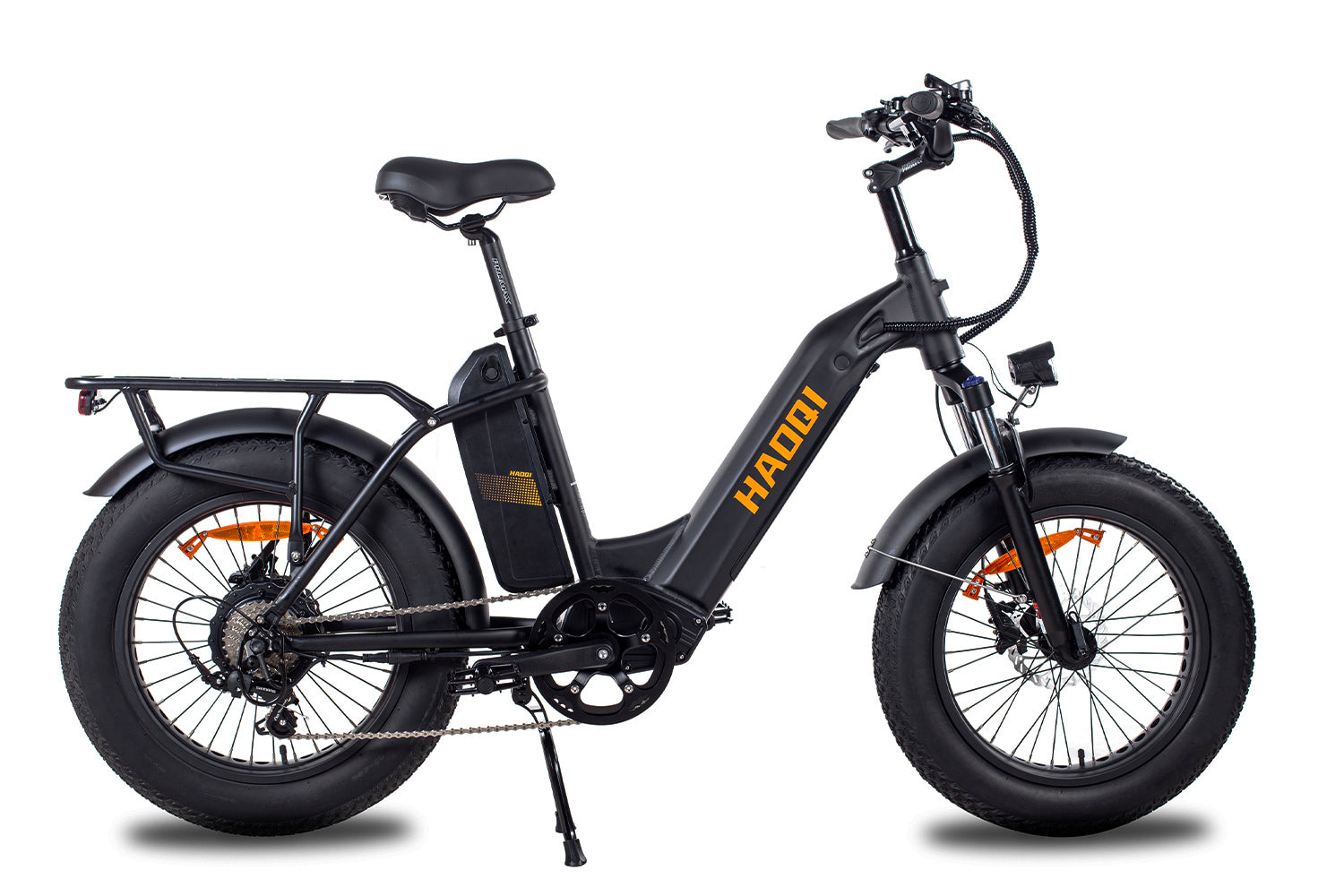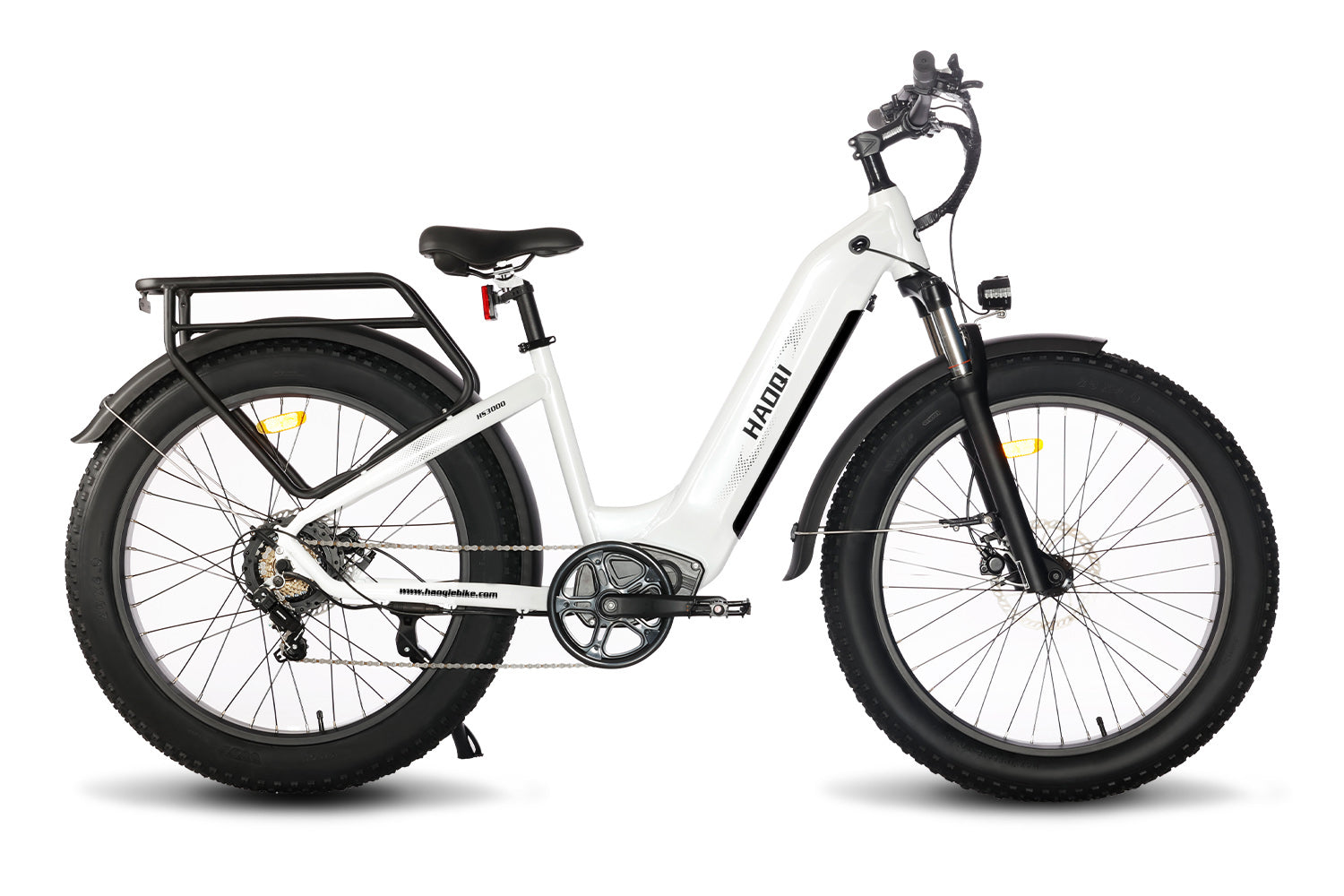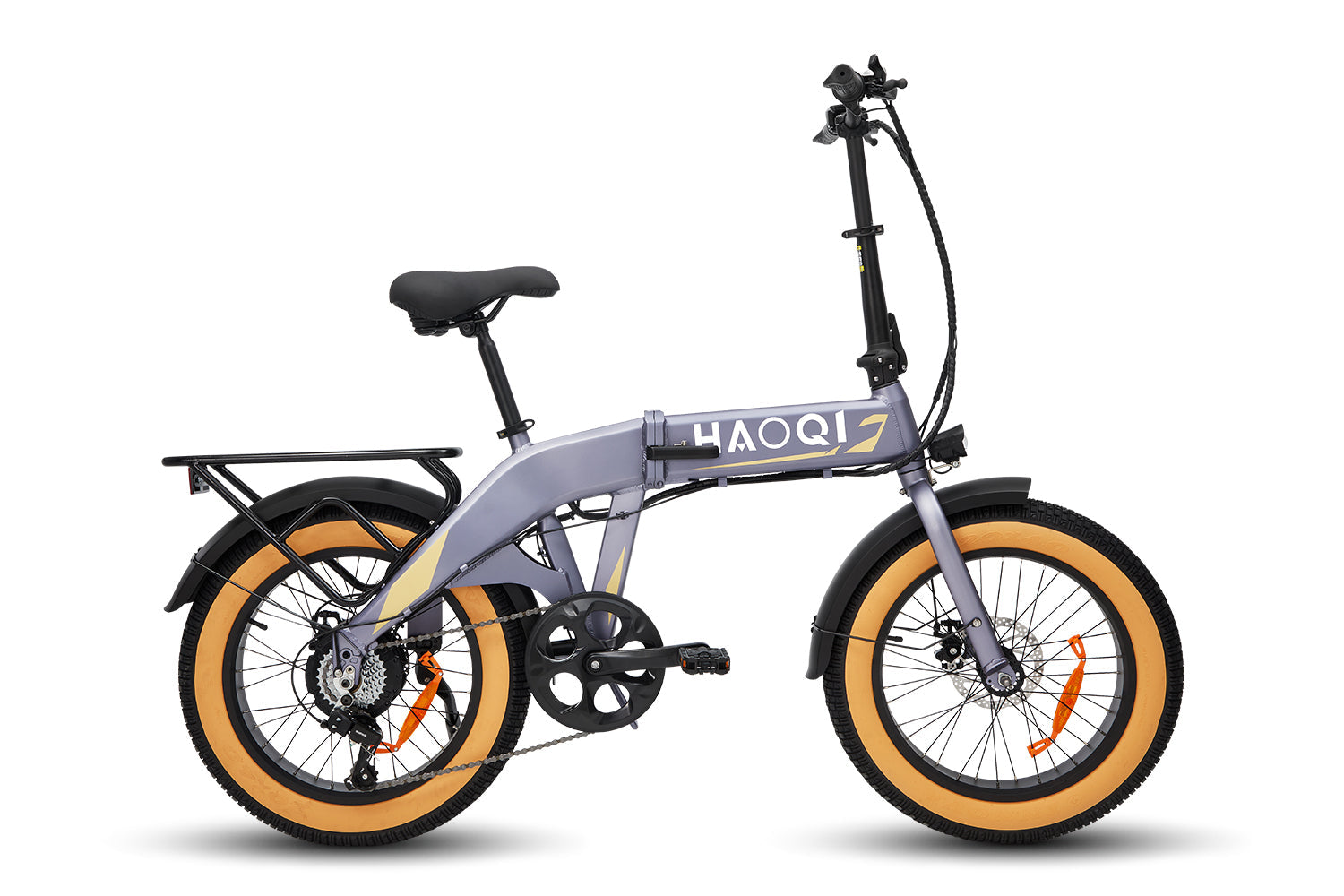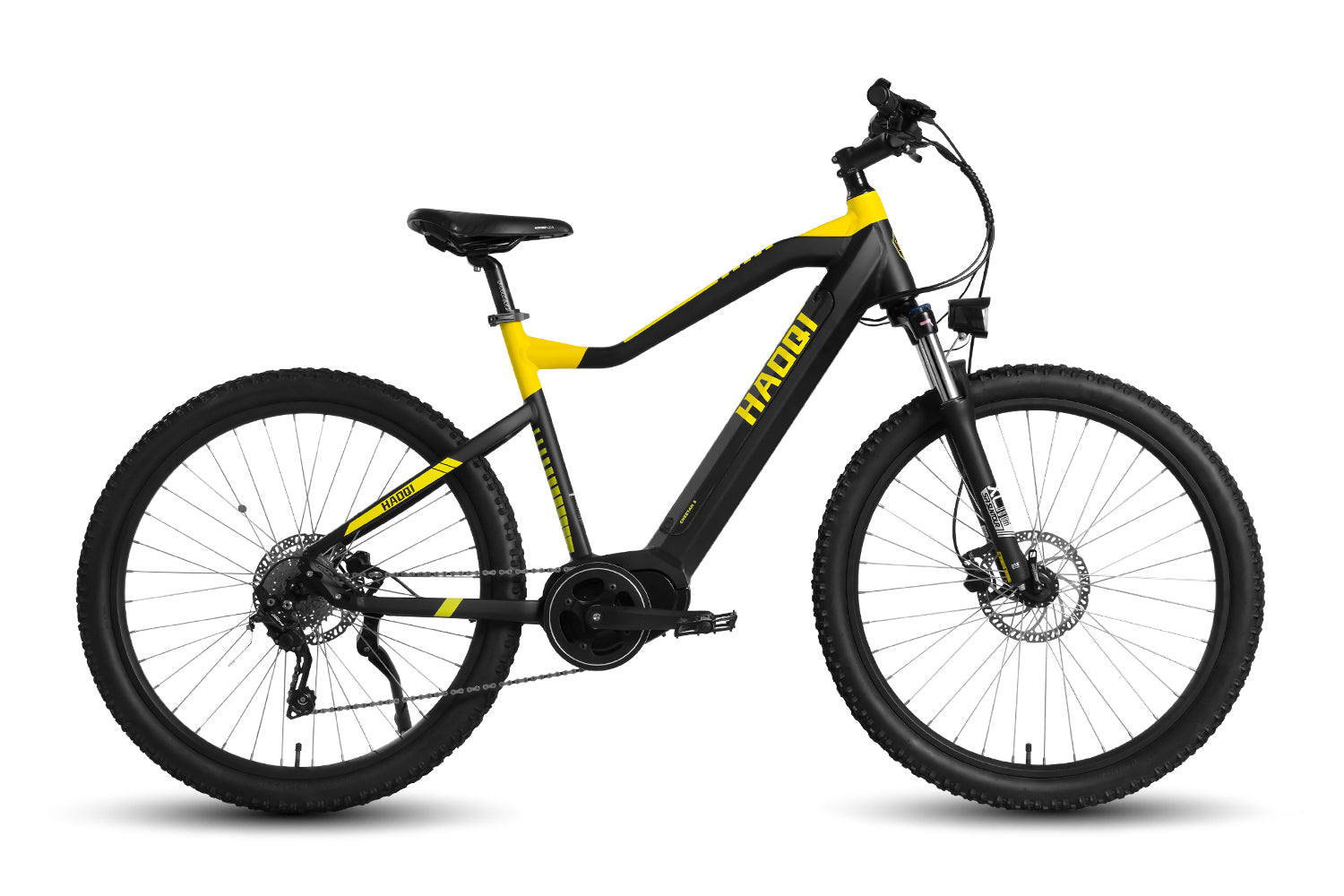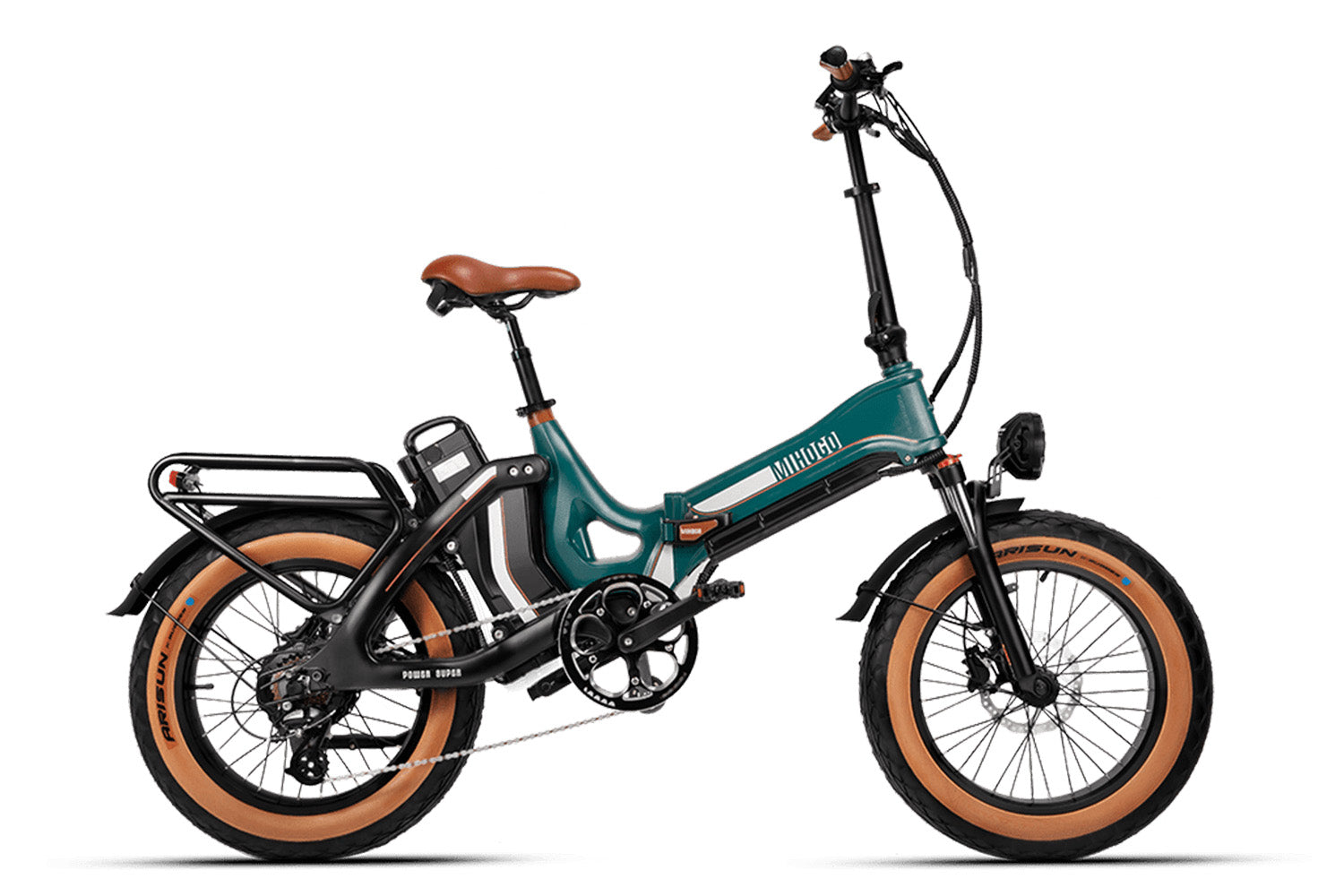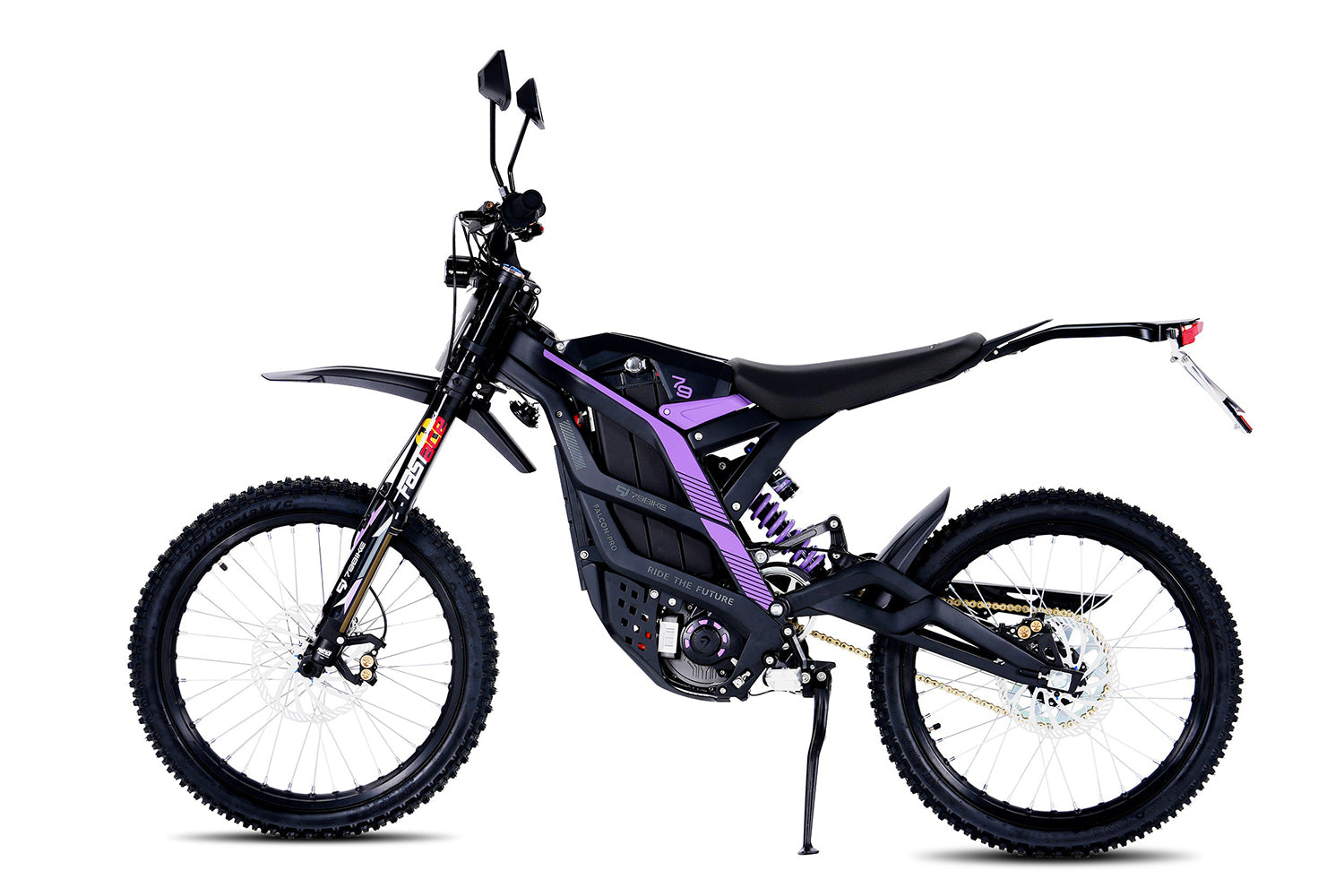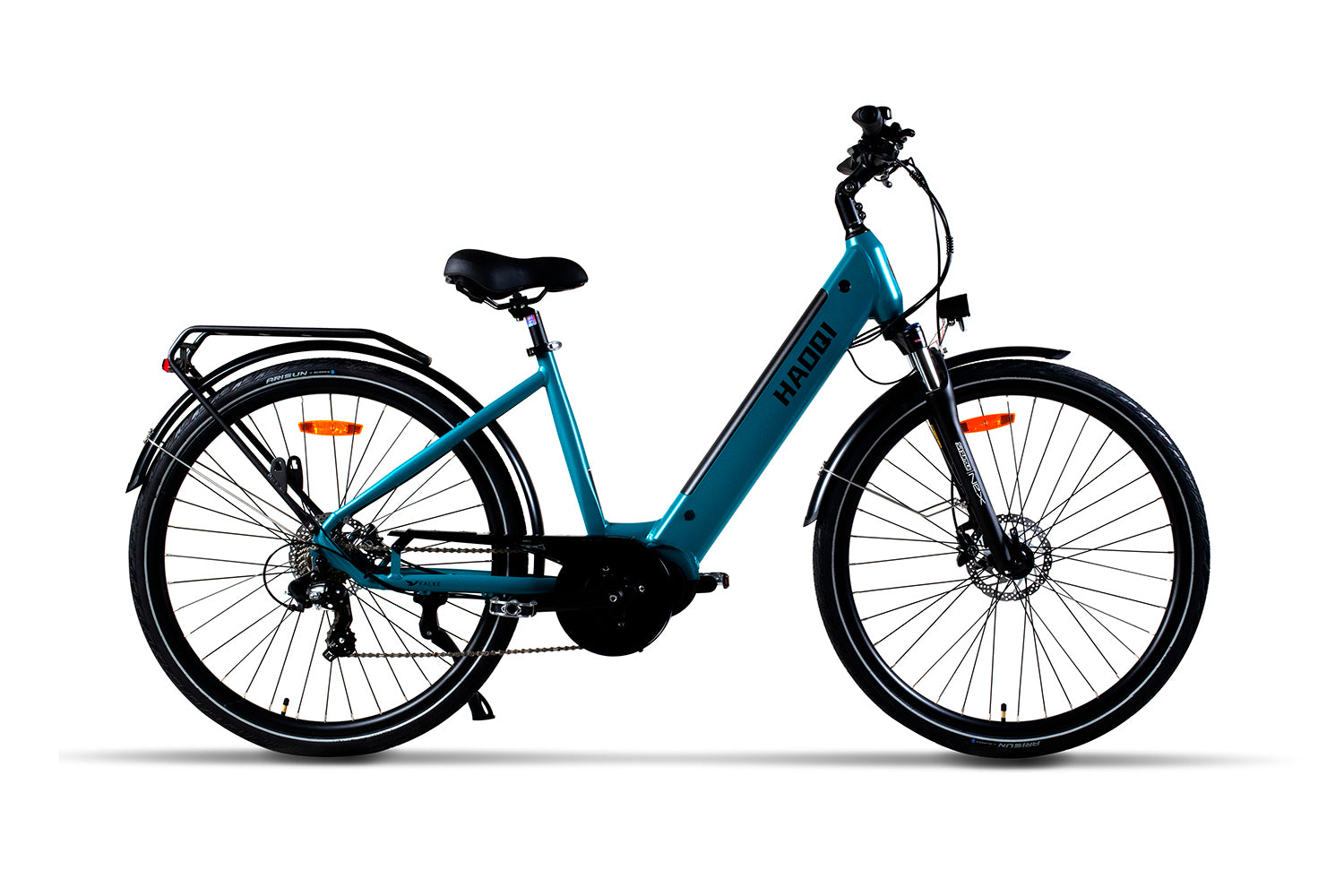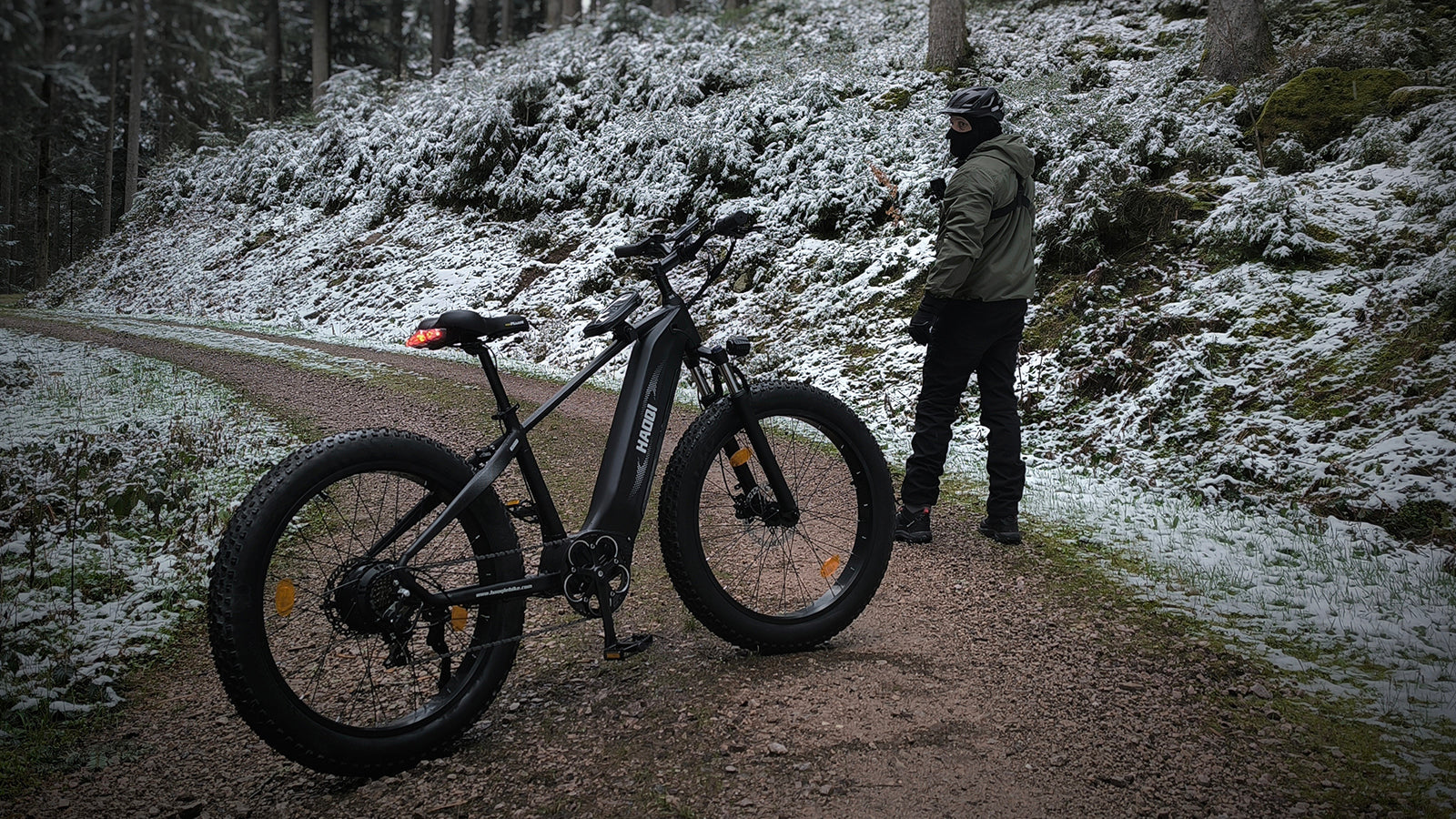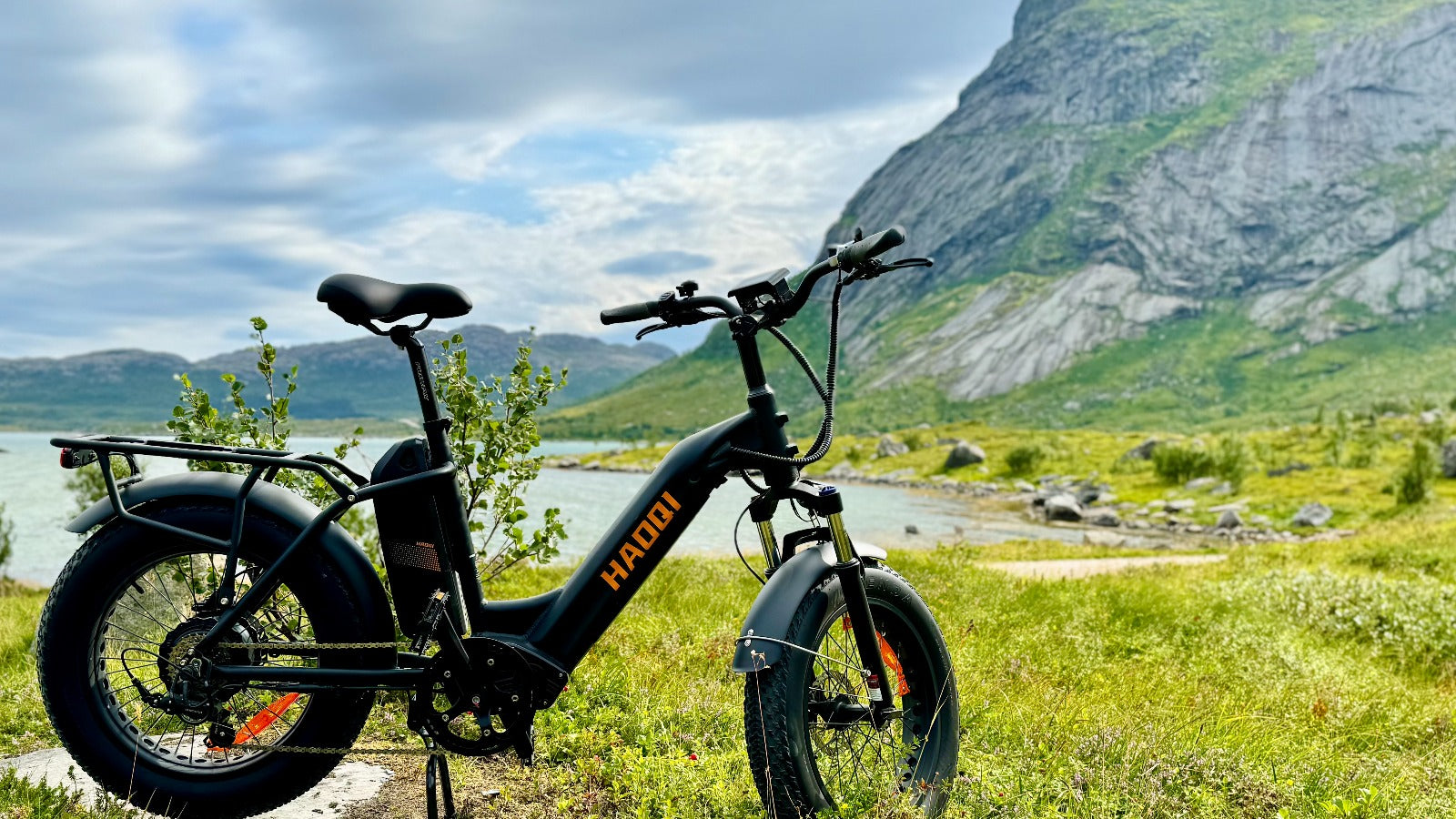E-bikes, also called electric bicycles, come in many different shapes and sizes. One important factor to consider is weight. The weight of an e-bike can affect its performance, rideability, and range.
In this article, we'll explain what determines the weight of an e-bike, how it affects performance, and the pros and cons of light and heavy e-bikes. By the end, you'll have a better understanding of which type of e-bike is best for your needs.
What determines the weight of an e-bike?
Several factors affect the weight of an e-bike , all of which play a crucial role in its performance, usability, and design. Understanding these factors will help you choose an e-bike that best suits your needs.

Frame material
The material of the frame has a big impact on the weight of an e-bike. Common materials include aluminum, carbon, steel and titanium. Aluminum frames are popular because they offer a good balance of strength and lightness. Carbon is lighter and more expensive and offers an excellent strength to weight ratio, ideal for high-performance bikes. Steel frames are heavier but offer durability and a comfortable ride, making them suitable for rough terrain. Titanium offers a mix of lightness and strength, but is also very costly.
Engine and battery
The type and size of the motor and battery are key factors in determining the weight of an e-bike. Mid-drive motors are typically lighter than hub motors, but can still add significantly to the weight, especially in higher-power models. The battery also contributes significantly to the overall weight, depending on its capacity (measured in watt-hours). Larger batteries offer longer range, but are also heavier.
Additional components
E-bikes are equipped with various components that increase their weight, including suspension systems, tires, and accessories such as racks, lights, and fenders. While full suspension systems improve comfort and handling, they add more weight than hardtail or rigid setups. Likewise, wider tires and rugged wheels designed for off-road use can increase the weight of the bike.
Design and features
The overall design and built-in features of an e-bike also affect its weight. For example, folding e-bikes often have reinforced frames and hinges, which results in a higher weight despite their compact size. Integrated features such as built-in lights, GPS systems and advanced displays can increase weight, but also improve the functionality of the bike.
How does weight affect the performance of an e-bike?
The weight of an e-bike has a direct impact on its performance, affecting factors such as speed, maneuverability, range and the overall riding experience.
Speed and acceleration
Heavier e-bikes tend to have slower acceleration compared to lighter models due to the greater mass that needs to be propelled. This can affect how quickly you reach cruising speed from a standstill. However, once you get up to speed, a heavier bike will be better at maintaining speed on flat terrain.
Maneuverability and handling
Weight significantly affects the maneuverability and handling of an e-bike. Lighter bikes are generally easier to handle, making them ideal for city riding where frequent stopping, starting and navigating traffic are common. While heavier bikes may offer more stability at higher speeds, they can be harder to handle in tight spaces or during slow maneuvers.
Range and battery life
The weight of an e-bike affects its range and energy efficiency. Heavier bikes require more energy to move, which reduces the overall range per charge. This means that a lighter e-bike with the same battery capacity can typically go farther than a heavier one. Using energy efficiently is crucial to achieving maximum range on a single charge.
Climbing ability
When it comes to climbing hills, lighter e-bikes have a clear advantage. Less weight makes it easier for the motor to move the bike uphill, requiring less effort from both the motor and rider. Heavier e-bikes can struggle on steep climbs, requiring more power and potentially draining the battery faster.
Advantages of heavier e-bikes
While lighter e-bikes offer clear advantages in terms of speed and maneuverability, heavier e-bikes also have several advantages that cater to different riding needs and preferences.
Stability and comfort
Heavier e-bikes often offer greater stability, which can be particularly beneficial at higher speeds or on uneven terrain. The extra weight can dampen vibrations and provide a smoother ride, increasing overall comfort. This makes heavier e-bikes suitable for long-distance rides and touring.
Durability and strength
E-bikes with sturdier frames and components tend to be more durable and resilient to harsh conditions. They are often designed to carry heavier loads, making them ideal for carrying luggage or as utility vehicles. This extra strength ensures the bike can withstand regular use without any performance degradation or safety risks.
Advanced features
Heavier e-bikes often come with more features and accessories that improve functionality and comfort. For example, integrated lighting systems, built-in luggage racks and robust suspension systems can improve the riding experience and make the bike more versatile and practical for different uses.
Performance and benefits
Heavier e-bikes often come with more powerful motors and larger batteries to compensate for the increased weight. This can result in impressive capabilities, including higher top speeds and extended ranges, especially on flat or slightly hilly terrain. The extra power ensures that the bike remains efficient and enjoyable to ride despite its weight.
Light or heavy e-bikes: which is better?
The choice between a light or heavy e-bike ultimately depends on your specific needs, riding style and intended use. Both types offer different benefits and may be more suitable depending on the situation.
Urban commuting
For city commuters who need to navigate traffic, stop and start frequently, and possibly carry their bike up stairs or onto public transport, a lighter e-bike is usually preferable. The ease of handling, quick acceleration, and portability make lightweight e-bikes ideal for city commutes.
Long-distance tours
For long-distance touring or recreational riding on a variety of terrain, heavier e-bikes might be a better choice. The extra stability, comfort and durability can improve the long-distance riding experience and ensure you can carry extra gear and enjoy a smoother ride on varying surfaces.
Off-road and rough terrain
If you plan on using your e-bike on rough terrain or off-road trails, the durability and strength of a heavier e-bike can be beneficial. The robust construction and increased stability help to overcome the challenges of off-road riding and ensure a reliable and comfortable riding experience.
Performance and benefits
If performance and utility are priorities, heavier e-bikes with powerful motors and comprehensive features can be beneficial. They offer the strength to carry heavy loads and the performance to maintain high efficiency, making them suitable for utility tasks, hauling cargo, and even as a car replacement for short-distance trips.
Conclusion
Deciding between a light or heavy e-bike depends on your specific needs and riding conditions. Both types offer unique benefits tailored to different preferences and requirements. If you're looking for a powerful e-bike that's suitable for both light and heavy configurations, consider the various HAOQI electric bikes to suit your lifestyle. By understanding the impact of e-bike weight on your riding experience, you can make an informed decision that ensures an optimal ride tailored to your lifestyle.
FAQ
Why is the weight of an e-bike important?
The weight of an e-bike is important because it affects speed, maneuverability, range, and climbing ability. Lighter e-bikes are easier to handle and offer better acceleration, while heavier e-bikes offer stability, durability, and a higher load capacity, which affects overall performance and riding experience.
Can I lift and carry an e-bike by myself?
Yes, you can lift and carry an e-bike by yourself, but it depends on the weight of the bike and your physical strength. Lighter e-bikes (15-25 kg) are easier to handle, while heavier models (35+ kg) may require more effort. Always use proper lifting technique to avoid injury and get help with heavier bikes if necessary.
Does a heavier e-bike mean it is of higher quality?
Not necessarily. A heavier e-bike is not always of higher quality; weight often reflects additional features, larger batteries, or more durable materials. Quality depends more on the components, workmanship, and performance than just weight. Evaluate the e-bike's specs and features to determine its overall quality.

